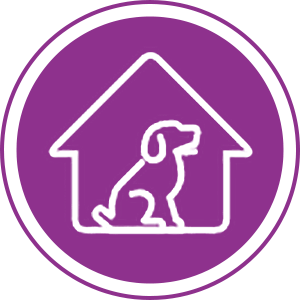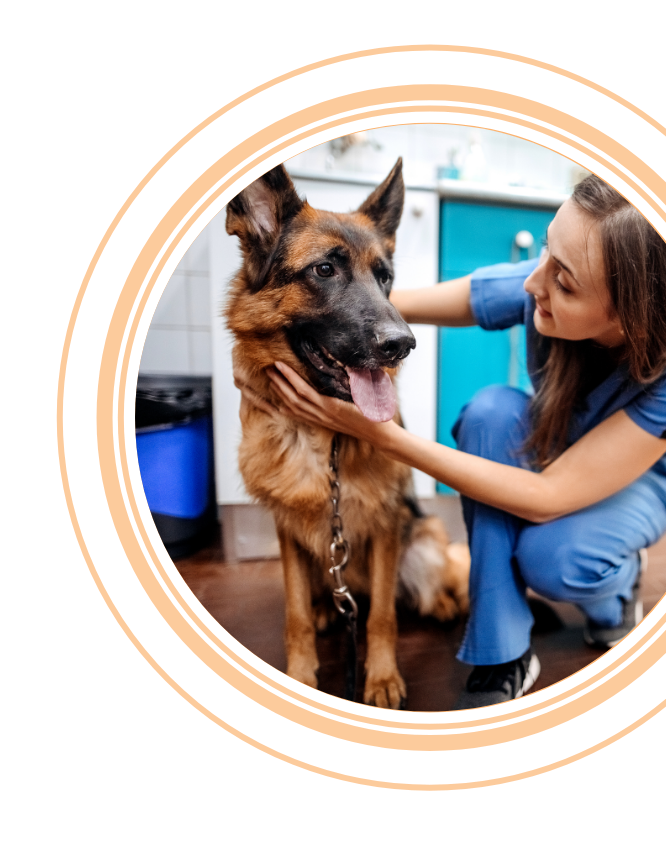

DOG FLU SYMPTOMS
Dog flu symptoms can be tricky.
Not because they’re hard to spot (they’re not), but because they’re very similar to symptoms of other canine respiratory diseases.
That’s why it’s important to contact your veterinarian if your dog shows any of these signs:
Dog flu symptoms can last for seven to 10 days or longer. The time between when your dog is infected and when it shows symptoms (the incubation period) is two to four days.
Severe cases of dog flu often lead to pneumonia and can also lead to secondary bacterial infections and even death. Watch your dog closely for:
- •High fever (greater than 104°F)
- •Difficulty breathing
- •Loss of energy (lethargy) and signs of depression
- •Severe appetite loss
Gastrointestinal problems like vomiting and diarrhea are not typical signs of dog flu, but they can happen. They could indicate other problems, so check with your veterinarian if your dog shows these signs.
Diagnosis
Without proper diagnosis, all canine respiratory diseases look similar. Because the symptoms of dog flu are so similar to many other respiratory infections (but, unfortunately, can be much more severe), the only way it can be properly diagnosed is through veterinary testing.
Your veterinarian can test for the presence of the dog flu virus. Testing is important because it’s the only way to truly identify the disease. Ideally, you should have your dog tested at the earliest opportunity, because early testing is the best way to get an accurate diagnosis and avoid false negatives.
Testing also allows you to quarantine your dog as soon as possible to keep the disease from spreading (a process known as viral shedding). Dogs can be contagious even after they no longer test positive for dog flu, so early detection is key. The last thing you want to do is unknowingly take a sick dog to the dog park or kennel.
Treatment
If your dog does contract dog flu, there is currently no medication available that will get rid of it. Dog flu is a potentially severe viral disease, so antibiotics won’t work. It can only be addressed with supportive treatment, meaning there is no “cure”. You can only make your dog comfortable while the virus runs its course.
Note that because dog flu looks very similar to other respiratory diseases, and because it sometimes leads to a secondary bacterial infection, your veterinarian may elect to treat with medication or other methods. Your veterinarian might also suggest treatments to help keep your dog comfortable. That’s why it’s so important to partner with a veterinarian who knows you and your dog well and can suggest the right course of action.

ISOLATE

HYDRATE

REST
Dog flu vs. other canine diseases
Without proper diagnosis, all types of canine respiratory diseases can look similar. If your dog receives the core group of vaccines recommended by the American Animal Hospital Association, he’s likely protected against some of the other common causes of respiratory disease, such as canine parainfluenza virus. If he visits a groomer, boarder, or doggy day care, they may also require proof of vaccination against Bordetella, another cause of “kennel cough”, as these diseases are sometimes called.
Be proactive and add a canine influenza vaccine to the list of regular vaccinations your dog receives. Your veterinarian can administer the vaccine any time of year, and it could mean the difference between life and death for your dog.
What’s causing that cough?
Wouldn’t it be helpful if dog flu and other canine respiratory diseases had distinct signs to differentiate one from the other? Unfortunately, as this chart shows, the signs can be nearly identical. That’s why it’s important to work with your veterinarian to get to the root cause of your dog’s illness.


Is your dog at risk of catching dog flu?
Wondering if your dog is at risk? Most dogs are, because dogs are social creatures. Take the quiz to help you identify the places and behaviors that present the most likely areas of danger for your dog.







